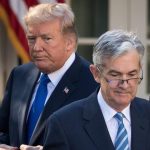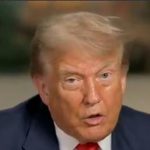Authored by Richard Bernstein via RealClearInvestigations,
China’s announcement this month of nearly a week of no new infections in Wuhan, the hard-hit city where the coronavirus pandemic originated, was both hope-inspiring — and hard to believe.
Medical professionals said the draconian set of policies imposed by the Chinese government – including widespread testing, isolation of all infected people and anyone they came in contact with – are proven methods for limiting contagion. Other countries, South Korea and Taiwan, for example, have followed similar courses, and they have also reported steep declines in new infections, though neither says it has achieved no new local infections, as China claims.
A Taiwan network reported that one hospital was under pressure from the central government not to admit patients so it could report no new cases.
“What we don’t know is the degree to which they’re being transparent and the degree to which they’re following up on existing infections,” Don Goldmann, a professor of immunology, infectious diseases, and epidemiology at the Harvard T. H. Chan School of Public Health, said in a phone interview.
Dr. Goldmann said Chinese scientists have been extremely transparent about what they’ve discovered about the coronavirus so far; they have shared information on the genetics and sequencing of the virus and details of autopsies, clinical care and outcomes, he said. They’ve also shared fatality rates among different age groups.
“So I’m not sure why they would make this up,” he said, “especially since risking another wave of this would not be in their interests or in the interests of their leadership.”
Still, skepticism about China’s no-new-local-infections claim is widespread, including, at least according to the anecdotal evidence, inside China. The doubt is fueled both by China’s Communist Party’s long history of propaganda and by the obvious benefits of changing the focus from the government’s initial efforts to suppress information about the coronavirus to its supposedly glorious victory over the disease crippling much of the world.
“A propaganda spokesman’s job is the turn messy facts into a clean narrative,” Andrew J. Nathan, professor of political science at Columbia University and a leading China expert, said in an email.
“China is trying to bury the embarrassment of the Covid-19 cover-up in a happy story of triumph over the virus.
“But it feels like overreaching to say that transmission has completely stopped,” Nathan continued.
“It seems that the message is political, not epidemiological.”
Some reports have chipped away at least at China’s most extreme claim of success. On the very days when the national health authority was announcing that there were no new local infections, social media accounts in China were circulating photographs of “urgent notices” put up in residential areas announcing new cases and warning people to stay home.
EBC News, a Taiwan cable news network, broadcast two such photographs dated March 20, which is two days after China reported there were no new local Wuhan infections. One of the notices, after announcing the new cases, read: “Do not go out, or gather, wash your hands, be careful, hold on, hold on, and hold on some more.”
EBC also broadcast video of a hospital in Wuhan that it says was taken on March 19 and provided by a local Wuhan journalist. The video shows a reception area crowded with people, some of them on gurneys with IV drips, and health care workers in full protective gear, white suits, face masks and goggles.
According to the Taiwan commentators, the reporter had accompanied a friend who was seeking care for his sick mother, but the hospital, while allowing patients to stay in the waiting area, was refusing to admit any of them. When the reporter asked the reason, a health worker at the hospital told him the hospital was under pressure from the central government to report no new cases.
There’s no question that since Beijing began implementing strict quarantine measures to fight the virus, the Chinese propaganda machine has been in full gear, praising the Communist Party and its paramount leader, Xi Jinping, for directing an effective response to the epidemic and presenting itself as a model for the rest of the world. The overall message is that, as always, when things get tough, the Communist Party and its leaders, and only they, can be counted on for national salvation.
“From the flood rescue effort in 1998 to the SARS epidemic in 2003 and the earthquake relief work in 2008,” the People’s Daily, the party’s official organ, said early in March, as China began reporting a drop in new coronavirus infections, “these great struggles one after the other have taught us that the Chinese Communist Party is the backbone of the Chinese people and the Chinese nation.”
In recent days, the Chinese media have gone beyond praise of the country’s leaders to depicting a world grateful to China for its leadership in the fight against the disease. It has also been expressing fury at President Trump for calling the disease the “Chinese virus” and it has lent credence to the unfounded conspiracy theory that the virus actually originated not in a market in Wuhan, but in an American military germ warfare lab.
“China selflessly extends helping hand to countries around the world in global battle against Covid-19,” read one recent headline in the English-language People’s Daily Online. The article showed pictures of a group of Chinese health care workers at a hospital in Italy giving the thumbs up. Another recent headline: “Foreign Politicians Thank China for Support Amid Epidemic.”
The barrage of good news propaganda has, moreover, been accompanied by what the human rights group Reporters Without Borders is calling China’s relentless crackdown on all independent news outlets that might mar the official narrative. This repression originated early in January when Li Wenliang, the doctor who first reported the existence of the virus, was taken into custody by the local Public Security Bureau and only released when he signed a confession admitting to “spreading false rumors.”
Dr. Li soon died of the very disease whose existence was being denied by China’s authorities, and his martyrdom forced the authorities to admit that they had behaved incorrectly in his case.
But the effort at information control has continued nonetheless. At least three citizen journalists who put out videos and reports on the dismal, crowded conditions in Wuhan’s hospitals have disappeared. Among them was Fang Bin, a businessman in Wuhan who was able to video-record his own arrest by Chinese police, posing as medical workers at his apartment. Fang was released for a time, but he soon put out a video in which he clearly anticipated his ability to act as an independent source of information in Wuhan wouldn’t last long.
“I’m afraid,” he said.
“Before me there’s the virus. And behind me, the legal and administrative apparatus of the Chinese state.”
There have been other apparent arrests, or at least unexplained disappearances, including that of Ren Zhiqiang, a wealthy property developer who circulated an article in which he criticized Xi for his handling of the crisis. Earlier this month, according to Reporters Without Borders, an issue of the magazine Ren Wu was pulled from the newsstands after publishing an interview with a prominent Wuhan doctor criticizing the government for censoring doctors.
Now, with China’s recent expulsion of reporters from The New York Times, Washington Post and Wall Street Journal, the country’s effort to gain total control of the coronavirus narrative would seem to be almost complete.
China “is in the midst of its most intensive propaganda operation in living memory, in trying to project its success in dealing with the virus,” Peter Tsang, the director of the China Institute at the London University School of Oriental and African Studies, told Hong Kong’s South China Morning Post.
“There is now an imperative for the statistics to be low, and now we have statistics that serve the political imperative.”
So, what is the true picture? That is not an easy question to answer, but the available evidence would seem to support the conclusion that, while the no-new-infections claim may be more propaganda than literal result, China has, as Dr. Goldmann said, almost certainly succeeded in substantially slowing down the spread of the virus.
Still, several things are missing from the official narrative that might be useful to other countries seeking to reduce the virus’s spread. These include whether the actions taken to track down infected people and force them into total quarantine could be duplicated in democratic countries. Taiwan’s EBC television network a couple of weeks ago broadcast video of a street brawl between local residents and police, the residents evidently furious they were unable even to obtain food and shouting, “We’ve been abandoned.” No images of that sort are likely to be shown on Chinese Central TV.
And then there’s the risk mentioned by Dr. Goldmann that a new flare up of the virus would harm the credibility of the authorities. But one commentator on Taiwan television speculated that, if there is a new surge of infections, the propaganda machine will put the blame on the United States and Europe, saying the new infections were the result of their failure to follow the Chinese example.











